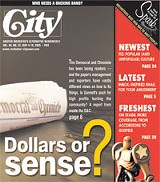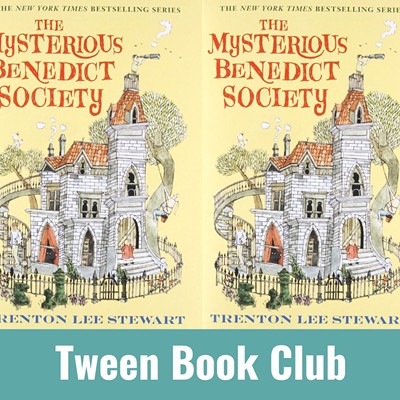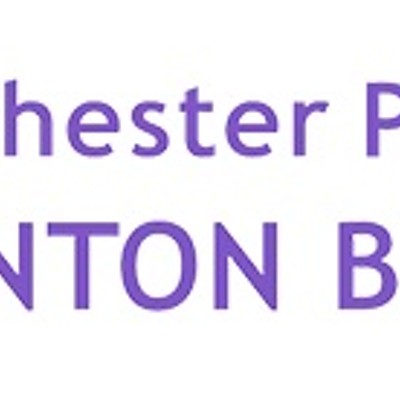Reader feedback 5.18.05
[
{
"name": "500x250 Ad",
"insertPoint": "5",
"component": "15667920",
"parentWrapperClass": "",
"requiredCountToDisplay": "1"
}
]
BOTTOM LINED
"Dollars or Sense," the headline on City's article about the Democrat and Chronicle, May 4) caught precisely the issue that is dominating the local Gannett daily.
Though the D&C has for decades been one of the community's most precious and powerful instruments, its recent decision making and news policies have now been exposed as a bottom-line obsession.
Writer KrestiaDeGeorge repairs much of that deficit, throwing light into dark spaces. The most important conclusion of his article is that Gannett management has adopted a policy of squeezing both the news and the news gatherers, and --- to greatly benefit the bottom line --- proclaiming the opposite.
As a former D&C staffer, I identified with Rochester Newspaper Guild members who, because of management policies, are continually frustrated in attempting to deepen and extend their daily news coverage to fulfill the community's needs.
But management continues to tell the Guild: "No matter how praiseworthy you and your goals are, you must do it with reduced staff, tight wages, and less news space. The stockholders' bottom line overrides everything."
Based on mounting competition from the broadcast and internet media, this is a blind, reactionary policy that can only speed the demise of what used to be, in the 15 years I worked there, one of the finest publications in New YorkState.
Mitchell Kaidy, Crittenden Road, Rochester (Kaidy is a former president of the Gannett editorial union, Local 17, American Newspaper Guild, AFL-CIO, as well as former president of the New York State Newspaper Guild.
BROADCAST NEWS
Reading your article on the Democrat and Chronicle ("Dollars and Sense," May 4), I was able to draw many parallels to the state of local radio and television news in this market. The bottom line in the media industry, both print and broadcast, is profit. A prime example of this in our Rochester market is what has happened to WHAM.
WHAM radio used to be an important news department in Rochester. Journalistically, it was an independent voice, and the WHAM 5 o'clock news hour was as much of a voice as the big-three television stations were. However, in came Clear Channel.
Due to lax deregulation of broadcast ownership laws by the FCC, Clear Channel came to own WHAM, and now that WOKR TV is known as WHAM, what were the two juggernauts in the Rochester media landscape have become nothing but shills. WHAM-AM's news broadcasts now exist simply to sustain the dominant ratings that Channel 13 has enjoyed for years. A voice in the media landscape has been lost.
The sign of a strong market is not only quality local television news, but independent radio coverage as well. WHAM no longer has a strong staff of reporters, looking for their own answers; instead they simply echo what Channel 13 is reporting.
Wait until WROC and WHEC TV turn up the heat in the ratings; then you will truly see WHAM-AM (still enjoying very high ratings numbers) used simply as a vehicle to drive Channel 13's numbers. It's a damn shame that it has to be this way.
Luckily, this market is not subject to television duopolies. Granted, Clear Channel may own Channel 13, WHAM, Hot Talk, The Fox, and The Nerve, but imagine if they owned FOX 31. With the relaxed regulations by the FCC, this is entirely possible. This could mean that entire news departments could be consolidated in the name of profit. You've seen what duopolies have done to radio: Brother Wease is doing spots that air on The Zone. Imagine if that came to your television set: if during American Idol on Channel 31, Don Alhart was telling you to watch Channel 13 WHAM News at 11.
The sad thing is, this can happen. The lucky thing is, it hasn't happened in this market. Yet.
Name withheld by request
PROFIT RULES
Kudos for Krestia DeGeorge's well-researched and balanced story on the changing face of the Democrat and Chronicle ("Dollars or Sense?" May 4). The telling of this disturbing tale was long overdue. And City once again produced the kind of thorough, fair, and insightful journalism this town and this country desperately needs.
When I was a kid, a popular riddle was: What is black and white and red all over? Answer: the newspaper (black and white and READ all over). Well, newspapers are no longer simply black and white and, sadly, they're no longer read all over the way.
Neither the problem nor the solution to the decline of daily newspapers is black and white. What's happening to the D&C is simply one example of what's happening to countless corporations and organizations. You don't have to look far to find other examples of workers and quality being sacrificed on the altar of profit.
The corporate model of profit above all else and rigid top-down management continues to do deep damage to our culture. That all non-management D&C sources (save one who spoke only in his capacity as union president) would talk only under the veil of anonymity speaks volumes about the lack of trust and safety fostered by management.
The D&C's shrinking staff, shrinking readership, and shrinking coverage is symptomatic of the worldwide trend toward seductive electronic technology, the explosion of choices and subsequent weakening of once-dominant media, the frightening complexity of the world, and the increasing sense of impotence to control or change the course of events. The latter breeds the kind of numbness publisher Hunkealludes to when he refers to "people's disengagement and lack of interest."
I've been a lifetime reader of the D&C, and I will continue to be. While there is much I still enjoy about the D&C, I'm saddened by its pandering and dumbing down.
Its photos are great, and staff photographers frequently tell a moving story. Its periodic in-depth series dealing with local problems and situations serve the public well. Its ongoing day-in-the-life series puts a human face on our suburbs. Its Speaking Out pieces give voice to divergent views. Several of its columnists are like members of an extended family: You may not always agree with them, but you're glad to hear from them.
Yet some changes smell of profit over public trust. Ever-greater advertising space and smaller staffing has dictated ever-shrinking content. The average article, review, column, editorial, and letter-to-the editor is shorter than its counterpart from past decades. Just as the short-attention-span imprint of TV programming is obvious in USA Today, the McNewspaper imprint of USA Today is obvious in the D&C.
Their periodic tinkering with format illustrates how "different" is sometimes merely different, not better. The recent change to the Living section is a case in point, a classic example of pandering to what the bosses think will better appeal to a young audience accustomed to split screens and graphically busy websites. It's a reflection of what has happened to so many magazines in this era of mass ADD: pumped up visuals, fragmented layout, and shrunken content.
City refers to "the D&C's strict guidelines for more mugshots and more quotes from minorities." The recent domination of black faces in the pages of the D&C is nothing short of reverse discrimination. It distorts the racial mix of the metropolitan reading area. A newspaper of record should report the world as it is, not as it wants it to be. Leave the editorializing to the editorial page. As one reporter who was told to squeeze a photo of an African-American into the story said, "We've gone off the deep end."
And off the deep end is editor Magnuson's preoccupation with reader relevance. Isn't newspaper management supposed to give the public what it needs as well as what it wants?
Perhaps the most accurate explanation for the state of the D&C was publisher Hunke's business-speak statement, "We're an operating unit of a large multi-national corporation."
I have great compassion for what newspapers are going through, and I want them to survive and flourish. The communications revolution has invaded their lofty security. Change is a constant, but I don't think the way newspapers should change is to try to be more like TV or the Internet. Let them focus on their unique strengths. Let newspapers be newspapers.
Rick Taddeo, Irondequoit
FED UP
Thanks for a very interesting article about a newspaper that first created its own monopoly in this market, and then quickly set about making itself irrelevant ("Dollars and Sense," May 4).
I have a couple of stories to share. The first takes place in 1997, when I was working as a copywriter for the advertising agency handling the D&C's account. The paper was already experiencing problems, and our pack of angry and confused clients from Gannett were flailing about, trying to find a solid marketing position to attract those lucrative "Gen-Xer's."
Writing taglines is one of the most difficult and frustrating assignments an advertising writer can have. We had gone through list after list of taglines. Reams of paper. Making one last attempt, my creative director went to the D&C offices for yet another caffeine-propelled presentation. They had moved the marketing target yet again, and I was vainly trying to write to it.
"No, no, no!"
"No?
"You're not getting it!"
"OK. Could you at least be clear about what you want this tagline to express?"
Much client anxiety, followed by furrowed brows, finished up with this Hall of Fame outburst: "We want the tagline to say, This is a kick-ass paper for a kick-ass town!"
My creative director, God bless him, smiled and politely asked: "How long have you lived in Rochester?"
Story Number 2: About two years later, my wife and I were getting fed up with the D&C's multiple typos, misspellings, and omitted words. One Saturday, we discovered several typos and two major problems. One was a serious factual error in the sports section. The other was incredibly poor writing and editing of a news story; the victim and the perpetrators became so confusingly entwined that the reader couldn't distinguish one from the other.
I called the editorial staff, leaving a detailed message and later got a call back. The editor whined. "We don't have enough people. We can't get good proofreaders. We don't have enough time to fact check." When Monday rolled around, I cancelled my subscription.
I now take my news from internet sources, get my weather from WHAM, and read City for in-depth analysis of Rochester issues. It works for me. Obviously, it works much the same for thousands of others.
The D&C is the newspaper version of the old Catskill comedy circuit joke: "Oy! The food here is so awful!"
"Yes... and such small portions, too."
Tom Laemlein, Darwin Street, Rochester






